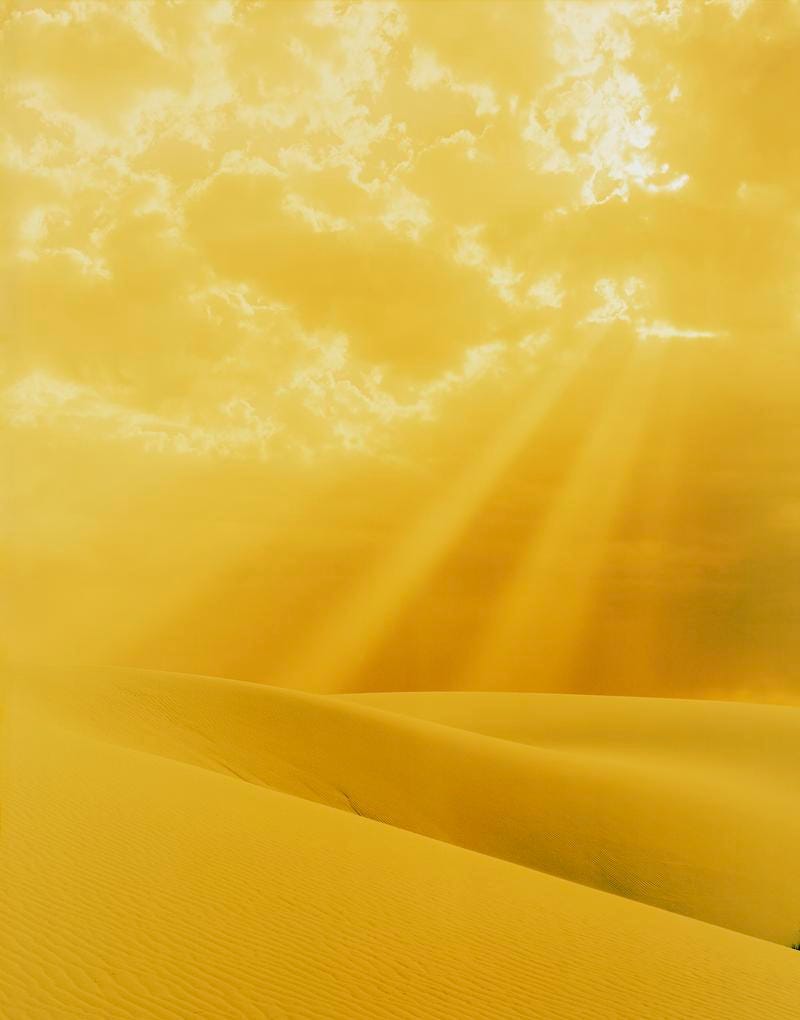You Should Know: David Benjamin Sherry
If you like Ansel Adams and challenging perspectives, you should know David Benjamin Sherry
In an effort to bring more positivity to the nature conversation, I’ve decided write some short profiles of artists who I really admire for their exploration of their and our relationship with nature and the more-than-human world. I hope you enjoy.
I first came across David Benjamin Sherry’s work on the cover of an edition of my favorite author Terry Tempest Williams’ book The Hour of the Land.
As someone who never identified with the often aggressive, overly masculine version of the outdoors and time in nature (think camo, guns, killing things and cooking them over a fire, etc) I was instantly intrigued by the image. Having already read The Hour of the Land when it first hit bookshelves, I knew the book was about relationships - what the National Parks mean to us, what we mean to them and even what we mean to each other. To see an image of wild Texas - where I spent most of my childhood - reconstructed in what I describe as Barbie Pink, I knew people would be challenged by it. Why is a book about our National Parks dressed in pink?
The image Sherry created also reminded me of my first ever favorite photographer - Ansel Adams.
Finding Sherry’s website as I became more intrigued by his work, I started to wrap by head around his aim.
David Benjamin Sherry (b. 1981) is an artist working to challenge and reinvigorate the American Western landscape tradition by examining our complex interconnection with the natural world, with an emphasis on queer identity, color and magic. Sherry’s work aims to celebrate the beauty of the American landscape and engage with the fraught history of the West, with its glorified legend of freedom fabricated from stolen lands, which continue to be threatened today. Through the media of analog film photography and painting, his vibrant, large scale and often monochrome works present a new perspective on the subject. Sherry states that “color is a conduit for me to convey and promote an emotional resonance for the landscape, while weaving in my sense of otherness as a queer person, and to symbolically represent those who have been inaccurately left out of the the American West’s mythical narrative of rugged (straight, white, male) individualism.”
Through stark color - and often colors that aren’t natural to the spaces in the image - Sherry makes us rethink what we know about these natural spaces. It’s no coincidence that Sherry uses a similar type of camera to Adams. Both are famous for their use of large format film cameras which, compared to digital cameras, require a process built around thoughtfulness that creates time for reflection and deeper understanding of the subject.
In other work, Sherry drops the monochromatic styling for more direct commentary on our human relationship with nature and the more-than-human world. In a project called Paradise Fire, Sherry shows us in stark contrast the human presence in beautiful, more-than-human spaces.
Sherry’s work can also be seen in some amazing editorial features including Chasing Divinity in the Mojave Desert for Document, Earth for Aperture #234 (with words from
), and my favorite, In the Land of Giants for The New York Times.His latest exhibition titled New Moon focuses on monochromatic paintings (alongside a few photographs). The work still examines landscapes, but in a more abstract fashion and devoid of any human presence.
Rather than depicting what is directly in front of him, as in his expansive color photographs, Sherry's latest work presents the natural world as something not only to bear witness to but to be felt: a revelatory event happening to their creator.
Find David Benjamin Sherry online at:
Sherry is currently offering a print for sale - Save me, (White Sands National Park, New Mexico), 2021 (pictured below) - on his website to fund some of his current work.
Unless otherwise noted, all images are from David Benjamin Sherry’s website.









